YOU! GUYS! Finally, the salted caramel sauce of my dreams. This recipe is different from your average salted caramel; it’s thicker, richer and has a slightly FUDGY texture that will absolutely send you over the edge. I have been testing versions of this recipe every autumn for over 7 years; it’s exactly like the fudgy salted caramel they sell at Apple Hill near Sacramento. And bonus, it’s easy. You can knock this out in 30 minutes. Try it drizzled on ice cream, in Salted Caramel Sandwich Cookies, as a dip for apples, or naked on a spoon.

Table of Contents
- My 7-year quest for the best caramel sauce
- Traditional salted caramel sauce
- The BEST homemade salted caramel sauce
- Why corn syrup?
- Heavy bottom pot
- Salted caramel recipe ingredients
- How to make salted caramel
- What to serve with easy caramel sauce
- How to store leftover salted caramel
- Can you freeze salted caramel sauce?
- Caramel sauce recipe frequently asked questions
- Caramel treats for that caramel mood
- More amazing toppings to try!
- Easy Salted Caramel Sauce Recipe
I just had to explain to my 7-year old Valentine that her booster seat keeps her safe in case we get in an accident. Apparently she thought we insisted on using it every car ride just so she is high enough to be able to see out the window in the back seat. Ha! Ahh, the innocence of youth!

Every year we strap our kids in those carseat gizmos and take a trip up to Apple Hill, a collection of orchards near Sacramento, where you can pick apples, eat apple cider donuts, and pretend that you’re not too hot in your fall sweater. Several years ago my kids convinced me to buy a caramel apple and I gave in, even though caramel apples are the WORST (can I get an amen?)

I was hot, tired, overstimulated by small children, and will they slice that caramel apple for you? NO, so 3 broken plastic knives later, sitting on my knees in the grass because all the picnic tables are taken, we finally split the apple into chunks and take our first bite. And in spite of it all, I had one of those euphoric moments that Remy describes on Ratatouille: pure bliss from a combination of flavors.

I had found it: a caramel apple with perfectly tender caramel that was NOT overly stretchy, and that did not harden too soon while eating. This caramel looked different: it was not perfectly smooth and glossy and shiny. It was…grainy looking. FUDGY looking.

I practically ran back to High Hill, the place where I had bought the caramel apple. I interrogated the shop keeper to find out who made the caramel apples, who made the caramel, what sorcery was afoot.
She told me the caramel is homemade on site, and I could buy a tub of it over there (for 20 bucks a pop). I bought it, came home and tried to recreate it, and failed miserably. I have bought a $20 tub of this caramel EVERY year since 2016 and tried a new version every single fall, to no avail…until now.
Today I’m bringing you the culmination of all these years of testing! The salted caramel sauce of my dreams. I will do an entire post on Caramel Apples later; I have to research all the details and play with the recipe to see if it needs any minor adjustments (but it will be VERY close to this recipe, I know.) I have found a thousand ways to eat this caramel, sandwiched between Salted Caramel Cookies being one of my very favorites!

My 7-year quest for the best caramel sauce
The ingredients are simple, and listed right here on the lid of the tub, but caramel is all about the method; there are literally a thousand ways to combine these ingredients.

I researched dozens and dozens and DOZENS of caramel recipes to see how and when to combine them, and what temperature to bring them to. If you’ve ever delved into the world of caramel making, you know there are endless variables. Heat it to 234? 250? 300? Add all the ingredients at once? Bring it to a certain temperature, than add more ingredients, and bring it up to yet another temperature? Gah! I tried everything. Nothing gave me that FUDGY texture I was going for, while still giving a distinctly CARAMEL flavor (not just a brown sugar/butterscotch flavor.)
I remember the year that I tried several top-rated caramel recipes, to see if any of them had these magic qualities. None of them did, so I gave the jars of caramel to whoever was around at school pick up that day. My friend Jenny still talks about how she ate that whole jar of caramel single handedly (but it wasn’t the one...not for me.)

Then there was last summer when I tried a new method and the resultant failure caramel was so hard that we had to soak the top of the pan with water, scrape off the top layer of caramel, then soak it again, scrape it off…it took hours 🤣 That was up in Montana visiting Eric’s parent’s. Sorry for whatever I did to your pot Kris, it’s probably never been the same.
But here, in my kitchen, just on Monday actually, I finally figured it out. First we are going to make regular caramel; then we’re going to add all the ingredients for Caramels. Not caramel sauce, but actual parchment-wrapped caramel candy squares. It’s like a hybrid recipe.
Traditional salted caramel sauce
Recipes for caramel sauce are almost all the same, with varying ratios. Start out with a bit of water and granulated sugar in a pot, heat until it turns amber and smokes, then add in some cream and voila: caramel sauce. At the end of this water-sugar-cream process, some recipes add salt, some add vanilla, some add a bit of butter, to smooth things out and amplify the flavors. My Favorite Caramel Sauce adds a squeeze of lemon, a tip I picked up from Cook’s Illustrated, that helps brighten the flavors.
This recipe is different from the classic version. If you want a “classic” salted caramel, go make My Favorite Caramel Sauce, and add some more salt. That’s really all there is to it. It is smooth, glossy, and has a thin, rather honey-like texture when heated. It stretches like candy, and it is delicious.

The BEST homemade salted caramel sauce
Fudgy is the best way to describe today’s caramel. It has a smooth mouthfeel (I promise it doesn’t taste grainy) but a chewy, rich texture that feels like biting into fudge. Fudge that is actually CARAMEL.
Today’s recipe starts out the same as regular caramel: we are adding sugar to a pot with some water, and heating it until it turns amber and we see wisps of smoke.
But then, we are taking a big turn: a turn into the land of caramels. Like, the parchment-wrapped kind that you see at Christmas. This recipe is basically a sauce version of the wrapped up caramels.
To get there, we need a whole different set of ingredients: corn syrup, evaporated milk, and butter. This is where the magic happens. It’s a whole second process beyond the initial caramel-making.

It is exactly the texture I was after: Rich. Spoonable. Not grainy — FUDGY. It is not stretchy like a typical caramel; it is thicker and more robust.
Can you see the texture in the photos? This caramel does not melt into itself immediately the way that normal caramel does. It’s thick, it’s sturdy, it leans a little in the direction of Chocolate Fudge but is a pure caramel flavor.

Why corn syrup?
There is corn syrup in this recipe, added after the initial caramel-making. I know the food campaigns of the past still make everyone squeamish about using corn syrup, but please, let it go. Read this defense of corn syrup and you will learn why pastry chef’s the world over adore corn syrup. For today’s recipe, we need the corn syrup to help prevent the caramel from forming back into sugar crystals. It keeps the caramel smooth, creamy, and just the right texture.
Heavy bottom pot
Next we’re going to talk about your pot. Yes, this really does matter! You need a heavy 3-quart pot for this recipe. That means when you pick it up, it should feel HEAVY. Give it a swing!
A cheap thin pan will heat your caramel unevenly, creating “hot spots” and causing it to scald. This means that you might get caramel that burns instead of caramelizes properly. The pan quality REALLY CAN BE the difference between perfect caramel and a burned sticky mess. Trust me!
Salted caramel recipe ingredients
Salted caramel uses mostly pantry ingredients. It’s easy to whip up without going to the store if you have a half hour. Check out what you’ll need here, then make sure to look at the recipe card below for specific amounts and instructions.

- white granulated sugar
- dark corn syrup
- evaporated milk
- salted butter
- heavy cream, optional
- kosher salt or sea salt
- vanilla extract
How to make salted caramel
First start out by grabbing a HEAVY bottomed pot. Add a bit of water and swirl it around to get the edges wet.

Pour the sugar in, being careful not to get sugar on the sides of the pot. Use your spoon to draw the moisture in to the sugar in the center:

If you do get any sugar crystals on the edge of the pot, like this:

Then use a moistened pastry brush to swipe it back into the liquid. My mother-in-law taught me this trick for candy-making!
Set the pot over high heat and bring to a full rolling boil.

Once you’ve reached a full boil, turn the heat down to medium and toss your spoon in the sink. You don’t need it for this part, and you don’t want the sugar crystals it probably has on it anyway.
Then, it’s a waiting game. Don’t walk away! But don’t stir either.

After a few minutes, your caramel will start to turn yellow.
Then orange…look at this color!

Then amber color. Take the pot off the heat ONLY when the color looks like this, AND you just barely start to see wisps of smoke coming off the top of the caramel. Then move fast! It’s gonna burn soon ahhh!!

Carefully start adding butter to the pot, off heat.

Whisk it well and add in the corn syrup.
Put the pot back on the burner and slowly start to add the evaporated milk, whisking as you go.

Once the milk is all added, bring it back up to a boil. Boil another 15 minutes or so, until a candy thermometer reaches 234 degrees F. This temperature is magical, I tell you! Perfect caramel, every time.

At this point, if you are using this recipe as a sauce or dip, add in a little extra cream to make it ultra smooth and stirrable. If you are using this caramel for these Salted Caramel Cookies, or to make Caramel Apples, then leave the extra cream out.

But don’t forget the salt! I added 1 and 1/2 teaspoons and thought it was perfect. If you don’t have kosher salt, start with less. Salt amplifies the flavors and gives your tongue a break from tasting just “sweet”!
Note the dramatic color change in the two above photos!! I made this recipe many, many times, and took final photos of a version where I hadn’t cooked the caramel quite so amber in the first part. The texture is the same, but the flavor and color are not as deep. If you make the recipe as written, your caramel will be with deeper darker color you see. The fudgy texture will be the same either way.

What to serve with easy caramel sauce
There are SO many desserts that can be brought to greatness with a touch of salted caramel sauce. I mean truly this list could be a mile long, but I’ll limit it to some a lot of my favorites. Sooo much caramel goodness!!
- as a dip for any kind of fruit, cookies or even some breads
- in the MOST incredible Salted Caramel Sandwich Cookies
- on top of ice cream, or in delicious shakes like this Caramel Apple-Cider Reduction Shake!
- speaking of apple, caramel and apple go together like peas and carrots. Try it drizzled over Apple Crisp, Homemade Apple Cobbler, the very best Apple Pie ever, Dutch Apple Pie, or super easy Apple Pie Bars. And if you’re feeling particularly naughty at breakfast time, you can even try it on Caramel Apple Upside Down French Toast!
- I can think of about a dozen kinds of pie that would be amazing with caramel sauce on them. Of course the Apple Pie already mentioned, but there’s also Cheesecake Pecan Pie, The BEST Banana Pie Recipe, Pumpkin Pie Bars, or even Sweet Potato Pie. I want to try it on top of Snickerdoodle Cookie Pie from Sugar Spice and Glitter. And I don’t drink coffee, but I’m guessing a lot of you would love it on this Coffee Cream Pie from Dough-Eyed!
- Salted caramel goes perfectly with all of The Best Fall Recipes! Be sure to scroll through all the amazing things on that page that you could pair with this sauce, including all things Pumpkin, Cinnamon, more Apple, and so much more!

How to store leftover salted caramel
My favorite way to keep caramel sauce is in a glass mason jar, but any heat-resistant container with a well-fitted lid should work. The caramel will become much thicker in the fridge, so the container needs to be heat resistant so you can warm it up and make it pourable again. If you don’t have a heat-resistant container, use any airtight container and scoop the salted caramel into a bowl to warm.
There’s so much sugar in caramel that it can be left out at room temperature for up to two weeks. In the fridge it can last up to 6 months! (Or more, I wouldn’t know.) It won’t go bad on it’s own; if something else gets in it (like, if you lick your spoon and double dip…) then eventually something could go fuzzy. Use a clean spoon and it should last a long time. They’ve found 2,000 year old honey in Egyptian tombs, you know…
To make it smooth and ready to serve again, just pop your jar (without the lid) into the microwave and heat for about a minute or two, stirring every 15-20 seconds until it’s at the consistency and temperature you like.
Can you freeze salted caramel sauce?
Given its long shelf-life in the refrigerator (6 months) and how quickly I consume it, I personally have no need for freezing caramel. But it does work! If you want to freeze it, pour the cooled caramel into a freezer ziplock bag. Get out as much air as possible, and seal. The salted caramel will stay good for up to 3 months. To use, simply thaw the bag of caramel on the counter at room temperature, then transfer to a glass jar with a lid and follow all the same storage methods as mentioned above.
Caramel sauce recipe frequently asked questions
A true salted caramel is typically made by cooking down sugar in a little water until it turns amber, then adding heavy cream and salt and vanilla. It’s delicious! For a true salted caramel, head to My Favorite Caramel Sauce and add an extra teaspoon of kosher salt to the recipe.
Today’s recipe is regular salted caramel, plus the ingredients used for homemade candy caramels, the kind wrapped in parchment paper at Christmas. We get the deep caramel flavor, plus the fudgy richness of the candy, all in one sauce. I’m obsessed!
The main difference, of course, is salt! Now, many regular caramel recipes do use salt, but salted caramel just adds more, so you end up with a higher ratio of salt to sweet. Check out the next question to see why that’s a good thing!
I don’t know who is asking this question, but I have a therapist I trust. Please reach out.
The long answer: your tongue LOVES to get hits of different flavors: umami, sweet, salty, sour, and bitter. In this case we’re elevating the caramel flavor from just sweet, to a more balanced salty-sweet. The higher ratio of salt in the recipe not only adds to that flavor complexity, it also cuts through some of the cloying sweetness of regular caramel. This allows you to taste more caramel flavor and less “just sweet.” Think of salt like a megaphone, amplifying the existing flavors of any dish.
They are actually not the same! The recipe for this salted caramel sauce is an enhancement of true salted caramel, which is made by almost burning sugar, then adding heavy cream, and salt.
Dulce de Leche is made by further condensing a can of sweetened condensed milk in heat over time. It’s a super easy, mostly hands off process and I highly recommend trying it out. I have several recipes that use dulce de leche that you can try too. I mean, this Dulce de Leche Cream Pie alone is worth it!!

Caramel treats for that caramel mood
Are you a caramel fiend like me? I get it, caramel is definitely a whole mood, and you need recipes to feed that mood. Don’t worry, I gotchu. Here are some of my favorites:
- Caramel Cake with Caramel Icing Recipe >> it’s hard to get more caramely than this, guys
- Homemade Salted Caramel Brownies >> one of overall favorite desserts. And that’s truly saying something!!
- Soft Caramel Pecan Sticky Buns Recipe >> take cinnamon rolls, and take them to level 1,000. The sticky caramel sauce and toasted pecans are *chef’s kiss*
- Caramel Nougat Pecan Rolls >> I make these every year during the holidays and they’re always so perfect
- Peach Pull-Apart Bread with Caramel Sauce >> this recipe always makes me think about how there should be more pull-apart bread with caramel sauce in this world
- Dreamy Coconut Cream Pie with Caramel Layer >> who knew that coconut and caramel were a match made in heaven??
- No Bake Salted Caramel Cheesecake with Caramelized Bananas >> no bake filling (= EASY) and pretty addictive
- Bananas Foster from Grandbaby Cakes
More amazing toppings to try!
I love a good drizzle to round out a dessert. Ice cream? Or ice cream PLUS Homemade Chocolate Sauce? I mean, I think the answer is obvious here, people.
- The Best Homemade Caramel Sauce >> my original, not-so-salty caramel sauce with a bit of a tang. This caramel is thinner, stretchier, and more glossy than today’s recipe, and has a deeper, less butterscotchy flavor. If you’re not sure which sauce to use for a topping, try making both and see what flavors you would like better with each dessert you want caramel for!
- Dulce de Leche from Condensed Milk >> kind of like an ultra thick, caramel-butterscotch sauce that I happen to eat by the spoonful
- Easy Lemon Curd Recipe >> I looove this curd, and it works on cookies, cakes, you name it
- Fresh Strawberry Topping >>one of my favorites! I use it on Crepes, in Strawberry Shortcake, and so much more!
- Buttermilk Syrup >> PLEASE try this on Pancakes or Sour Cream Coffee Cake and thank me later
- Blueberry Ginger Dessert Topping from Sense & Edibility
![]()
Facebook | Pinterest | Instagram

Easy Salted Caramel Sauce
Ingredients
- 1/4 cup water
- 2 cups white sugar
- 1/2 cup salted butter chopped
- 1 cup corn syrup
- 1 (12-ounce can) evaporated milk
- 3 tablespoons heavy cream optional
- 1 and 1/2 teaspoons vanilla extract
- 1 teaspoon kosher salt or sea salt (you can add up to 1 and 1/2 teaspoons)
Instructions
- Get everything ready to go, so you're not rushing later! Caramel-making is a fun process but you have to move quickly at times, so look alive. Measure out 1 cup of corn syrup and set it near the stove. Shake the can of evaporated milk and remove the lid. Unwrap 1/2 cup of butter (this is 1 stick) and use a butter knife to chop it into a few pieces. Set the cream carton and a tablespoon nearby.
- Add 1/4 cup water to a heavy bottomed 3-quart pot. (Do NOT use a cheap pot to make caramel, it might not turn out!) Swirl your pan around to get the sides of the pot wet, a few inches up the sides. Turn the heat up to high.
- Slowly pour 2 cups of granulated sugar to the center of the pot, making sure not to get any sugar crystals on the sides. With your wooden spoon, draw the water in from the edges toward the center, going slowly all the way around the pan until all the sugar is moistened. Do not leave any sugar crystals on the side of the pan. The goal is to dissolve all of the sugar. If there are sugar crystals on the edge of the pot, dip a pastry brush in water and swipe them into the liquid.
- Bring the mixture to a boil over high heat, then once boiling, reduce the heat to medium. Toss your wooden spoon (that likely has sugar crystals on it) in the sink; you don't need to stir for this part (but don't walk away.) Let the crystal-free pot of sugar bubble and boil for about 6-8 minutes undisturbed; read cues below.
- Eventually, the mixture will start to turn a light yellow color, then darker and darker until it reaches amber. The cue you are looking for is smoke. Once you see any signs of yellow, do not take your eyes off the pot as the color deepens and deepens. Eventually you see the first wisps of smoke. As soon as the caramel is evenly amber in color all the way across, AND you see smoke,* remove the pan from the heat right away. You have just made caramel.
- Off-heat, use a flat whisk to gently add pieces of butter into the pot, 1/2 cup of butter total, whisking well for every addition. Be careful, splashes will hurt like heck! The caramel will start to become creamy and thicker as you add butter and stir.
- Add 1 cup corn syrup** and whisk completely. Be sure to scrape the sides and corners and bottom of the pot well; the corn syrup tends to lump up, so be thorough.
- Move the pot back onto the burner and turn the heat to medium. It should start to boil again fairly quickly.
- Slowly add the 12-ounce can evaporated milk. Add a little bit, whisk completely, add a bit more, stir completely. Once all of the evaporated milk is added, settle in for the long boil. Keep whisking, only taking short breaks, and making sure to get into the corners of the pan. Boil, whisking for about 14-17 minutes; read on.
- It's best to use a candy thermometer to know when this step is complete. You want to boil the mixture until it reaches 234 degrees F. The time this takes can vary a lot because there are so many, well, variables (like pot-thickness, burner level, humidity level…) I recommend a Thermapen, the best thermometer on the market, but any old candy thermometer will do. Don't go much above 234 or 235 degrees F, or your caramel will be the wrong texture.
- Remove the pot from the heat as soon as it has reached 234 degrees. Continue whisking.
- Add 3 tablespoons cream, if you are using this caramel as a sauce or dip. Be careful not to splash yourself. Whisk completely. (If you are making Salted Caramel Sandwich Cookies or Caramel Apples, leave out the 3 tablespoons of cream for a firmer caramel.)
- Add 1 and 1/2 teaspoons vanilla extract and 1 teaspoon kosher salt (or sea salt). Start with less salt if you are nervous, add up to 1 and 1/2 teaspoons if you like it salty.
- Let the mixture cool completely, or at least cool enough that you don't burn your tongue on hot caramel lava, before tasting it.
- Use this caramel sauce as an ice cream topping, as a dip for apples, as the caramel for dipping caramel apples (full recipe and instructions coming soon), drizzled over Pumpkin Pie, or Apple Pie, over Pumpkin Dump Cake, or sandwiched between these Salted Caramel Sandwich Cookies…the possibilities are endless!
- Storage: I like to store my caramel in a mason jar. One batch fits nicely in a quart size jar. Any airtight container will do. This caramel is just fine kept on the counter at room temperature for up to 2 weeks, perfect for the random spoonful as you pass through the kitchen, ask me how I know. After 2 weeks, store it in the fridge for up to 6 months (or longer, probably!)
- Reheating: The fudgy caramel will be soft and dip-able, but not quite drizzle-able at room temperature. Heat in the microwave in 30 second intervals, stirring in between, before drizzling over desserts or ice cream.
 These Crispy Baked Buffalo Chicken Wings are delicious and crispy with no frying! Make the best buffalo wings at home…
These Crispy Baked Buffalo Chicken Wings are delicious and crispy with no frying! Make the best buffalo wings at home… 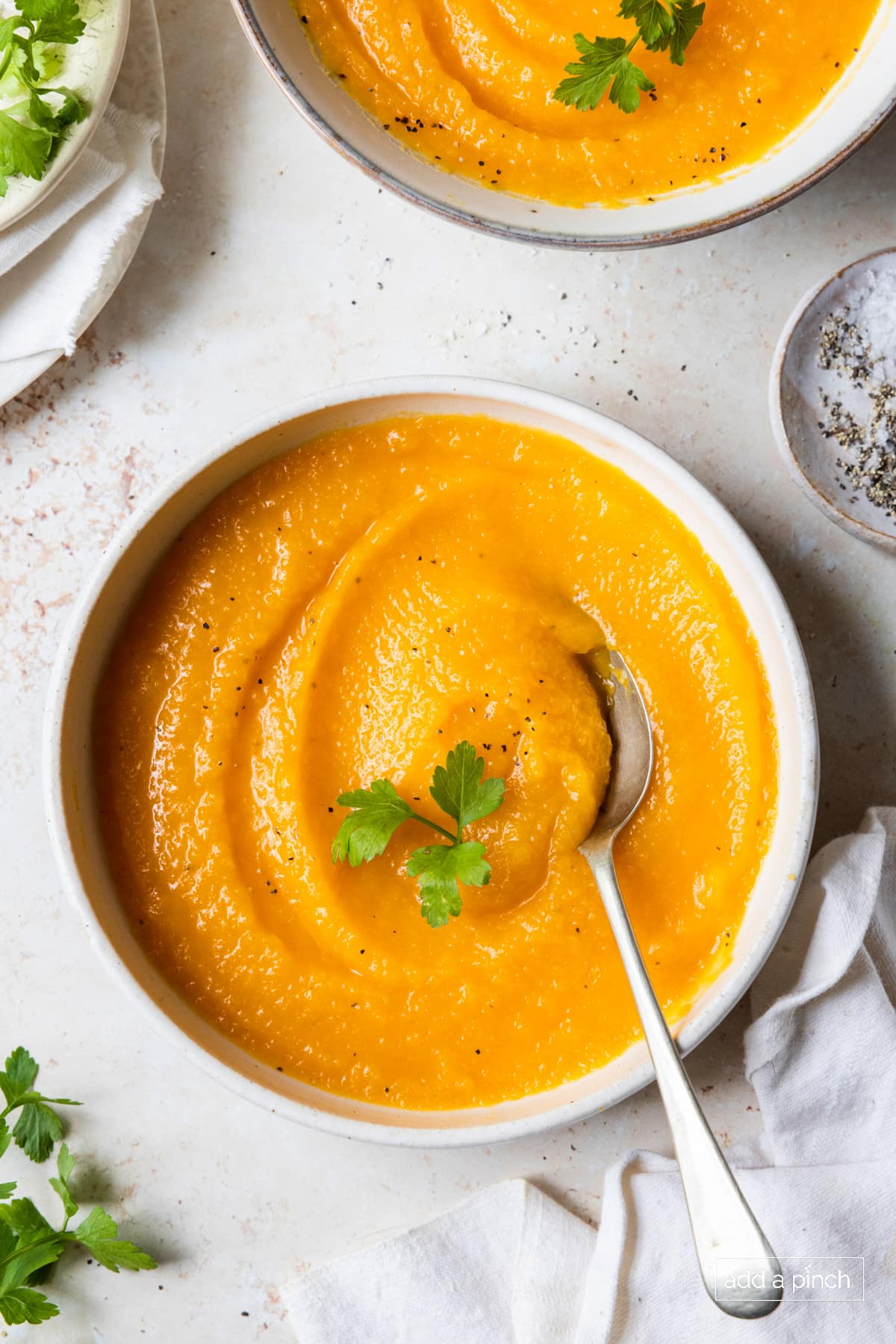 This creamy Butternut Squash Soup recipe is comforting and delicious for the perfect fall soup! Wholesome goodness made with just…
This creamy Butternut Squash Soup recipe is comforting and delicious for the perfect fall soup! Wholesome goodness made with just…  My tasty old-fashioned Apple Crisp recipe combines warm cinnamon apples with a buttery oat streusel topping for the perfect cozy…
My tasty old-fashioned Apple Crisp recipe combines warm cinnamon apples with a buttery oat streusel topping for the perfect cozy… 


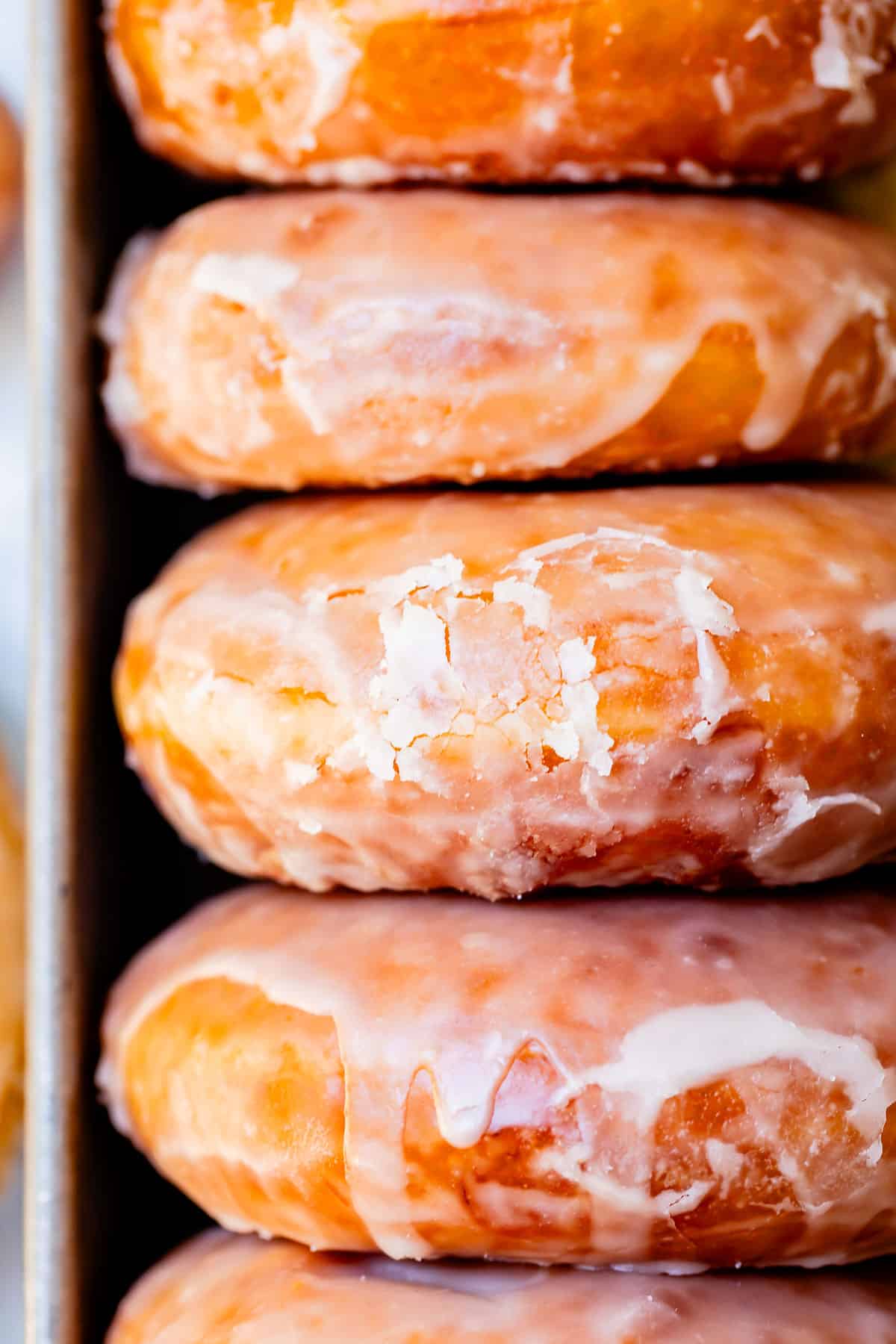






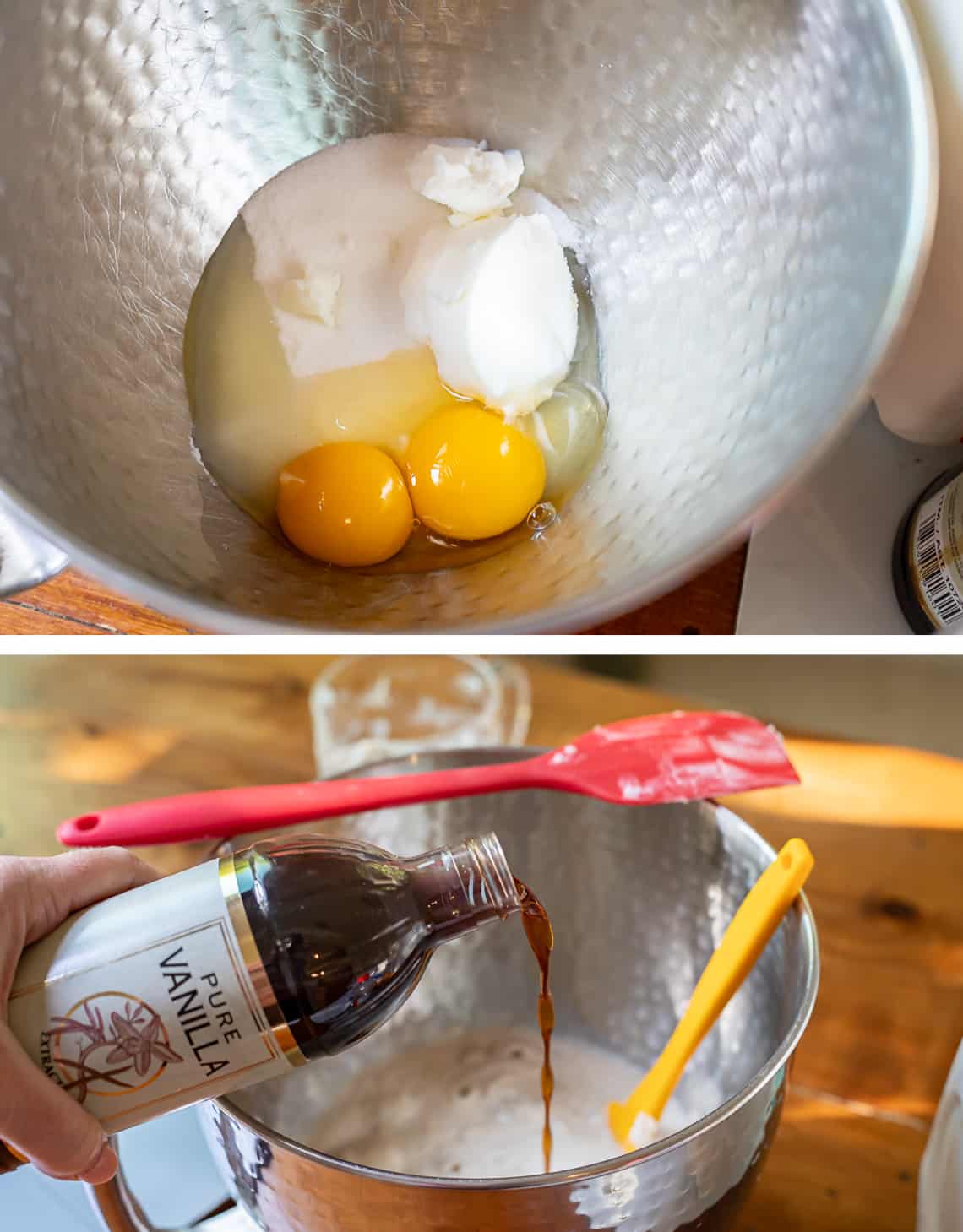














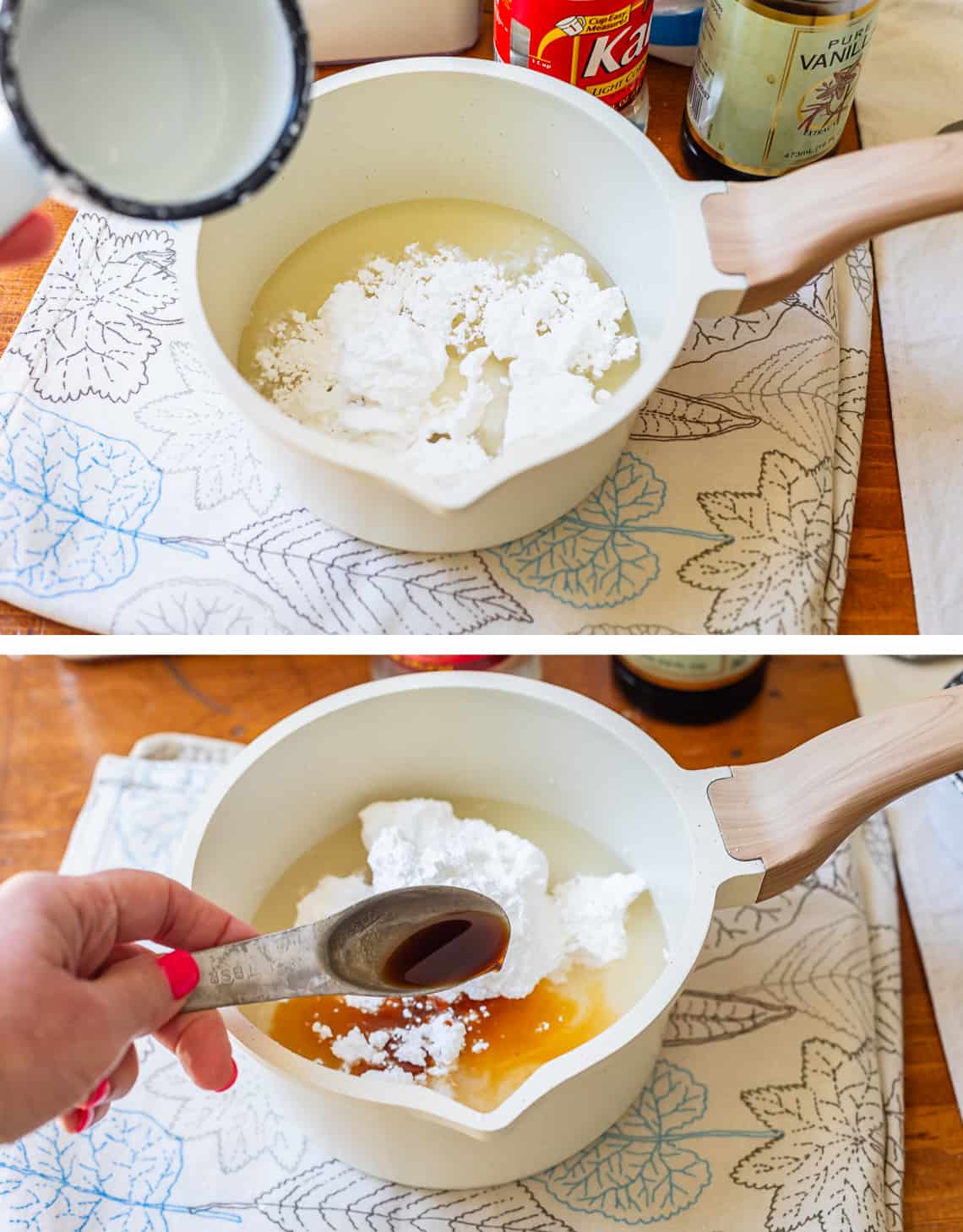







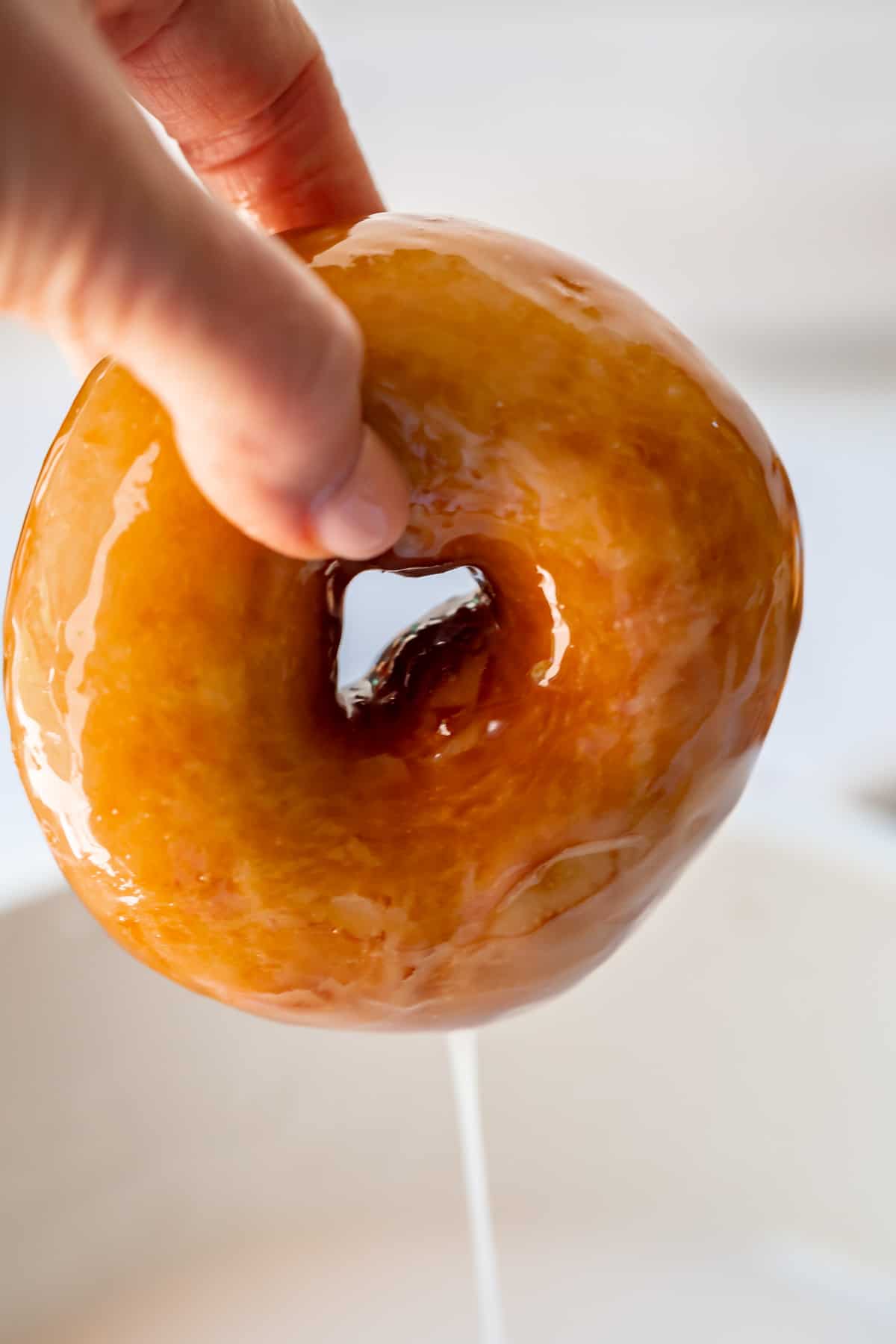






 This delicious Chocolate Chip Cookie Cake takes everything we adore about the iconic cookies and creates the best cookie cake…
This delicious Chocolate Chip Cookie Cake takes everything we adore about the iconic cookies and creates the best cookie cake…